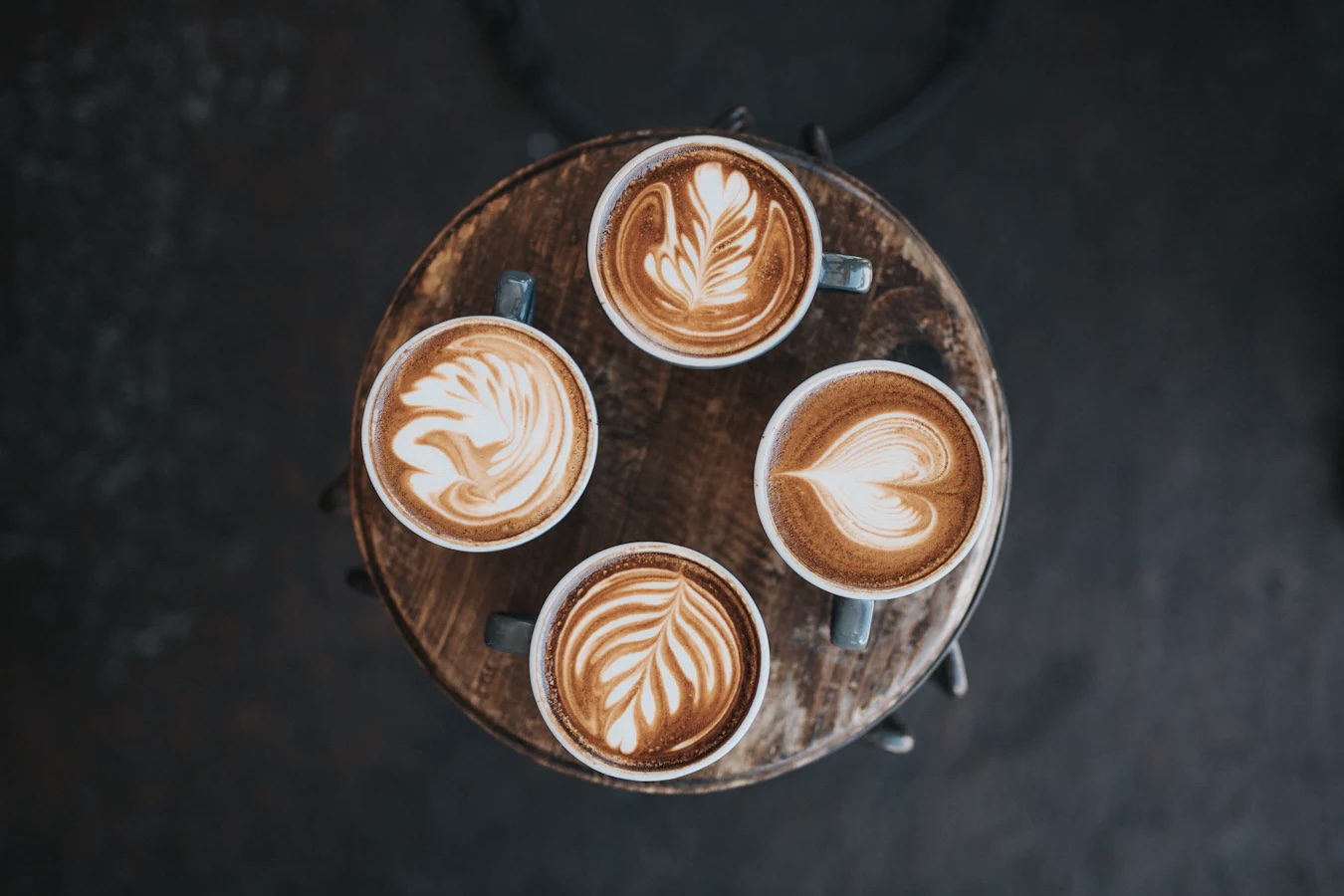Experience Travel Insights
Vienna Coffee House Tour: Where Ideas, Art, and Revolution Were Brewed
by Long Lin-Maurer • September 22, 2025

Your Viennese Coffee House Tour: A Living Room of History
In Vienna, a coffee house is never just a place to drink coffee. It is a fundamental institution, a cultural sanctuary, and a temporal oasis. It is the city’s extended living room, where time slows, conversations deepen, and history lingers in the air like the aroma of freshly brewed coffee and warm Apfelstrudel. Recognized by UNESCO as an Intangible Cultural Heritage, the Viennese coffee house culture is a complex and beautiful tradition, a window into the very soul of the city. To step inside one is to begin a unique coffee house tour, participating in a ritual that has shaped artists, thinkers, and revolutionaries for over three centuries.
Come and experience travel!
Personally designed, seamlessly delivered – your journey, our expertise!
We are a boutique travel agency and consultancy specializing in Hub & Spoke Tours across Central Europe, the Benelux and the Dolomites.
The Legendary Origins of Vienna Coffee Culture
Every great institution has its origin story, and the Viennese coffee house is no exception. The popular tale begins in 1683, with the second Ottoman siege of Vienna. As the story goes, a Polish-Ukrainian spy named Georg Franz Kolschitzky, fluent in Turkish and familiar with Ottoman customs, undertook a perilous mission through enemy lines. As a reward for his heroism after the siege was broken, he was granted the sacks of strange green beans left behind by the retreating Turkish army. While others dismissed them as camel feed, Kolschitzky knew their true value. He supposedly opened Vienna’s first coffee house, “Zur blauen Flasche” (The Blue Bottle), sweetening the bitter brew with milk and honey and thus creating the precursor to the famous Wiener Melange.
It is a wonderful, romantic narrative. The historical truth, as is often the case, is more nuanced. While the siege of 1683 was undoubtedly the catalyst that introduced coffee to the city on a grand scale, the first imperial privilege to serve coffee was actually granted to an Armenian merchant, Johannes Diodato, a few years later. Regardless of the precise details, the late 17th century marked the birth of a phenomenon. The dark, stimulating beverage from the East took root in the imperial capital and began a transformation from an exotic novelty into the cornerstone of Vienna coffee culture.
The Birth of an Institution: A Stop on Your Coffee Shop Journey
Throughout the 18th and 19th centuries, the coffee house evolved. It was more than a place of consumption; it became a nexus of information and discourse. In an era before widespread literacy and mass media, coffee houses subscribed to a vast array of local and international newspapers, which were artfully displayed on iconic bentwood newspaper holders (Zeitungsständer). For the price of a single cup of coffee, a patron could spend the entire day reading, debating, and engaging with the world.
This made them indispensable hubs for merchants, intellectuals, and civil servants, and a key part of any historical coffee shop journey through the city. Deals were struck over a Kleiner Brauner, political treatises were debated beside a marble-topped table, and reputations were made and unmade on the plush velvet banquettes. They became democratic spaces in a rigidly hierarchical society—places where a humble poet could sit at a table adjacent to a court official, both absorbed in their reading and reflection. The coffee house was an incubator of ideas, a public sphere that fostered the intellectual ferment of the Enlightenment and the revolutionary spirit of 1848.
The Fin-de-Siècle: A Café Hopping Guide to Modernity
Nowhere was the cultural power of the coffee house more potent than during the fin-de-siècle, the twilight of the Austro-Hungarian Empire. As the 19th century bled into the 20th, Vienna was a dazzling, anxious metropolis, a laboratory for modernity. This part of your café exploration takes you to its primary crucibles. Each establishment developed its own distinct character and clientele, forming an ecosystem of creativity and dissent.
At Café Griensteidl, the “Young Vienna” literary movement, including figures like Arthur Schnitzler and Hugo von Hofmannsthal, dissected the psychological complexities of the modern soul. When the Griensteidl was demolished, the intellectual flame passed to Café Central. With its soaring neo-Gothic ceilings and grand arches, this essential stop on any coffeehouse experience was the unofficial headquarters for a staggering array of luminaries. On any given afternoon, one might have found Sigmund Freud and Alfred Adler refining their psychoanalytic theories, architect Adolf Loos railing against ornamentation, or a fiery Leon Trotsky playing chess, awaiting his moment in history. The writer Peter Altenberg even had his mail delivered there, famously giving Café Central as his home address.
Come and experience travel!
We design bespoke travel experiences with a perfect balance of cultural depth, efficiency and comfort.
Specializing in seamless hub-and-spoke journeys, we create well-paced, immersive itineraries tailored to your interests.
Meanwhile, artists like Gustav Klimt, Egon Schiele, and Oskar Kokoschka gathered at the Café Museum, its spartan interior designed by Loos earning it the nickname “Café Nihilismus.” Here, they sketched, argued, and forged the visual language of Viennese Modernism. The coffee house was their office, their studio, and their stage—a place of intense production fueled by caffeine and intellectual camaraderie.
Decoding Coffee House Etiquette on Your Viennese Café Crawl
To truly appreciate the Viennese coffee house, one must understand its subtle, unwritten rules. This is not a place for hurried, transactional service. This café discovery is governed by the principle of Gemütlichkeit—a uniquely Austrian concept conveying coziness, comfort, and unhurried leisure. Understanding this coffee house etiquette is key.
Upon entering, you do not simply grab a table. You wait to be seated by the quintessential coffee house waiter, the Herr Ober. Dressed impeccably in a black tuxedo, the Herr Ober is not a mere servant but the master of this domain—a figure of authority, dignity, and often, a dry, laconic wit. Politeness and respect are paramount.
When you order your coffee, it will almost invariably arrive on a small silver tray, accompanied by a glass of cold, fresh tap water. This is a gesture of hospitality rooted in tradition, a palate cleanser and a sign that you are a welcome guest. Your glass of water will be refilled, unprompted, for as long as you stay. And you are welcome to stay for hours. There is no pressure to leave, no passive-aggressive hovering. The table is yours. This is the essence of the coffeehouse experience: it grants you the luxury of time and space, to read, to think, to write, or to simply watch the world go by.
A Taste of Tradition: A Coffee Tasting Tour Menu Guide
The coffee menu itself can be a delightful puzzle for the uninitiated. This coffee culture guide wouldn’t be complete without explaining the classics. A “coffee” is never just a coffee. A Wiener Melange is the classic: a shot of espresso “lengthened” with hot water, topped with steamed milk and a dollop of foam, similar to a cappuccino. An Einspänner, named for the one-horse carriages of the 19th century, is strong black coffee in a glass with a towering crown of whipped cream—the cream kept the coffee warm and could be drunk through on the move, a perfect drink to discover on your barista trail. A Franziskaner (Franciscan Monk) is a lighter Melange with more whipped cream than milk foam.
And then there are the Viennese pastries. The glass display case, or Vitrine, is a centerpiece of any coffee house, showcasing a tempting array of cakes and tortes. The Apfelstrudel, with its paper-thin pastry and warm apple-cinnamon filling, is a requisite indulgence, best served warm with vanilla sauce or cream. The legendary Sacher-Torte, a dense chocolate cake with a thin layer of apricot jam, is a Viennese icon, while countless other creations, from the creamy Esterházy-Schnitten to the rich Gugelhupf, tell their own stories of the empire’s baking traditions.
Come and experience travel!
Our expertise lies in uncovering authentic stories, hidden corners, and behind-the-scenes experiences that bring destinations to life.
We design customized mindful travel experiences that seamlessly integrate mindful eating and mindful indulgence. These experiences foster self-care and create transformational journeys that nurture mental well-being, promote sustainable travel, and strengthen family connections.
The Coffeehouse Experience Today: A Living Heritage
While the world outside has accelerated, the great traditional Viennese cafés endure. Establishments like Café Sperl, with its original billiard tables and cozy, wood-paneled booths, or the bohemian Café Hawelka, forever imbued with the artistic spirit of its post-war patrons, feel like living museums. Yet they are not relics. They remain vital parts of the city’s fabric, frequented by elderly Viennese ladies meeting for their daily Jause (afternoon coffee and cake), students studying for exams, and businesspeople conducting quiet meetings.
To complete a Viennese café crawl is to do more than simply sightsee. It is an act of cultural immersion. It is to find a quiet corner, order a Melange, open a book or a newspaper, and feel the pulse of a city that has always understood the profound importance of pausing, reflecting, and conversing. In an age of relentless speed and fleeting digital connections, the Viennese coffee house offers a powerful antidote: a beautifully preserved space for the enduring, analog pleasures of the mind. It is here, over a simple cup of coffee on your espresso expedition, that you can truly connect with the intellectual and cultural essence of Vienna.
Vienna Coffee House Tour: Historical and Cultural Insights
- UNESCO: Viennese Coffee House Culture – Explore the official UNESCO listing recognizing Vienna’s coffee house culture as an Intangible Cultural Heritage, highlighting its deep social and historical significance.
- Wien.info: Viennese Coffee Houses – A comprehensive cultural overview from Vienna’s official tourism portal, detailing the history, traditions, and the unique atmosphere of these iconic establishments.
- Wien Museum: Viennese Coffeehouse Culture – Delve into the rich history of the Viennese coffee house through insights and historical context provided by the Museum of the City of Vienna. (Note: Specific link is illustrative, as content varies.)
- Austrian National Library: Coffee House Archives – Discover digitized historical documents, literary works, and visual materials related to Vienna’s coffee houses, offering a glimpse into their past. (Note: Specific link is illustrative.)
- University of Vienna: Academic Insights on Coffee Houses – Access research and academic perspectives on the social, cultural, and political role of coffee houses in Viennese history, often from the History Department or Cultural Studies. (Note: Specific link is illustrative.)
- Europeana: Viennese Coffee House Collections – Browse a vast digital collection of artifacts, artworks, and historical records from various European cultural institutions related to Viennese coffee culture.
- Wikipedia: Viennese Coffee House – A well-referenced and detailed article providing a broad overview of the history, characteristics, and cultural significance of the Viennese coffee house.
- Austrian Cultural Forum: Vienna’s Coffeehouse Tradition – Read an article from an Austrian cultural institution abroad, highlighting the enduring legacy and contemporary relevance of Vienna’s coffee houses. (Note: Specific link is illustrative.)
- Austria.info: The Vienna Coffee House Culture – An official national tourism portal’s in-depth look at the cultural heritage and traditional aspects of the Viennese coffee house.
- Vienna History Wiki: Kaffeehaus – An entry from the official Vienna History Wiki, providing concise historical facts and references about the development and importance of coffee houses in the city.
We look forward to hearing from you:
